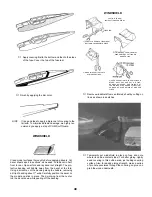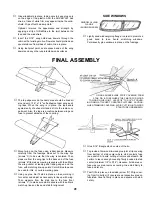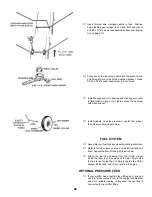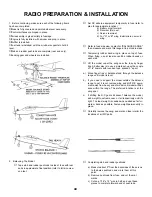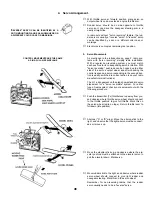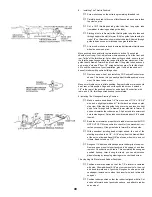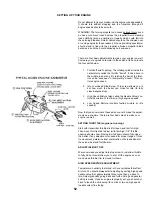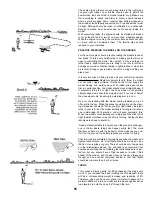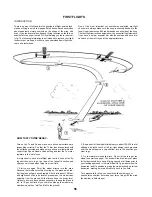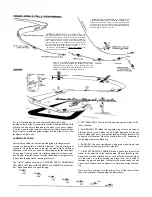
54
PRE-FLIGHT CHECK LIST, THINGS TO DO,
AND THINGS TO TAKE TO THE FIELD
Flight batteries fresh or fully charged
Radio transmitter (DON'T LEAVE IT AT HOME!)
Fresh 1-1/2 volt starting battery & Glo plug clip
Tools to tighten anything that can vibrate loose
Fuel and fuel bulb or pump
Extra props
Paper toweling (for clean up)
Prop wrench
Extra #64 rubber bands
SUPER JET
WHERE TO FLY
Fly only in areas sanctioned for R/C and known to be free of
radio interference. Ask your hobby dealer or other modelers
if there is an R/C flying field that is used by a local R/C club.
This is the ideal place to fly. If you don't know of an R/C club
nearby, contact the Academy of Model Aeronautics (AMA),
at the address on the front of this booklet, for information on
a club in your area. Remember: R/C flying fields need to
have rules to help prevent accidents, so ask about them
before you turn on any of your equipment! DO NOT TEST
your transmitter in the parking lot or anywhere nearby until
you are sure no one else is using your radio frequency. This
could cause another flyer to crash and make you very
unpopular!
If there is no club or other R/C flying site available, locate a
square area (preferably a grassy field), at least four or five
football fields long, which is free of power lines, trees, poles,
houses, busy streets and other obstructions. It must be at
least three miles away from any areas where other R/C
models, such as boats or cars, are operated, It should also
have a relatively smooth surface, as it will take practice to
learn precision landings, If you find a suitable location, turn
your receiver on for 2 or 3 minutes to check that no one in
the vicinity is operating an R/C device which could affect
your receiver and cause your plane to crash.
LEARNING TO FLY
Your chances of success are enormously increased if you
have an instructor. Learning to fly is harder than it looks, and
a mistake can seriously damage or destroy your model Even
full-scale pilots have problems learning to fly models
because it's different—they're not in the cockpit It's worth
real effort to find someone to teach you. Many clubs have
authorized instructors and there are even some R/C flight
schools. Ask your dealer, or even check on the internet to
see if there is someone who can help. Only if there is no
other way should you attempt to learn on your own.
CHECK YOUR EQUIPMENT!
Prior to going to the flying field, with radio batteries fully
charged, turn on both receiver (Rx) and transmitter (Tx) and
actuate all controls many times until you are satisfied with all
functions.
Before beginning each day's flying, make a range check of
your equipment in accordance with the manufacturer's
instructions, in general, with transmitter antenna collapsed to
6"-8", you should have an at least 100 foot range on the
ground. To check this, turn on both the transmitter and the
receiver switches, set the model heading away from you,
and walk away while transmitting signals. Watch to see that
no signals are missed until you are at least 100 feet away.
Only if the equipment works perfectly should any flights be
attempted. Again, be careful to not use your transmitter
when anyone else at the field is flying or testing on the same
frequency!
After the range check, stand behind the model and make
sure the control responses are correct. Moving the control
stick to the right should give right rudder (on a 3-channel
setup) or the right aileron should go up (on a 4-channel set-
up). Moving the stick back or down on the Tx should move
the elevator up, and vice versa.
Содержание Eagle 2
Страница 28: ...27 ...

